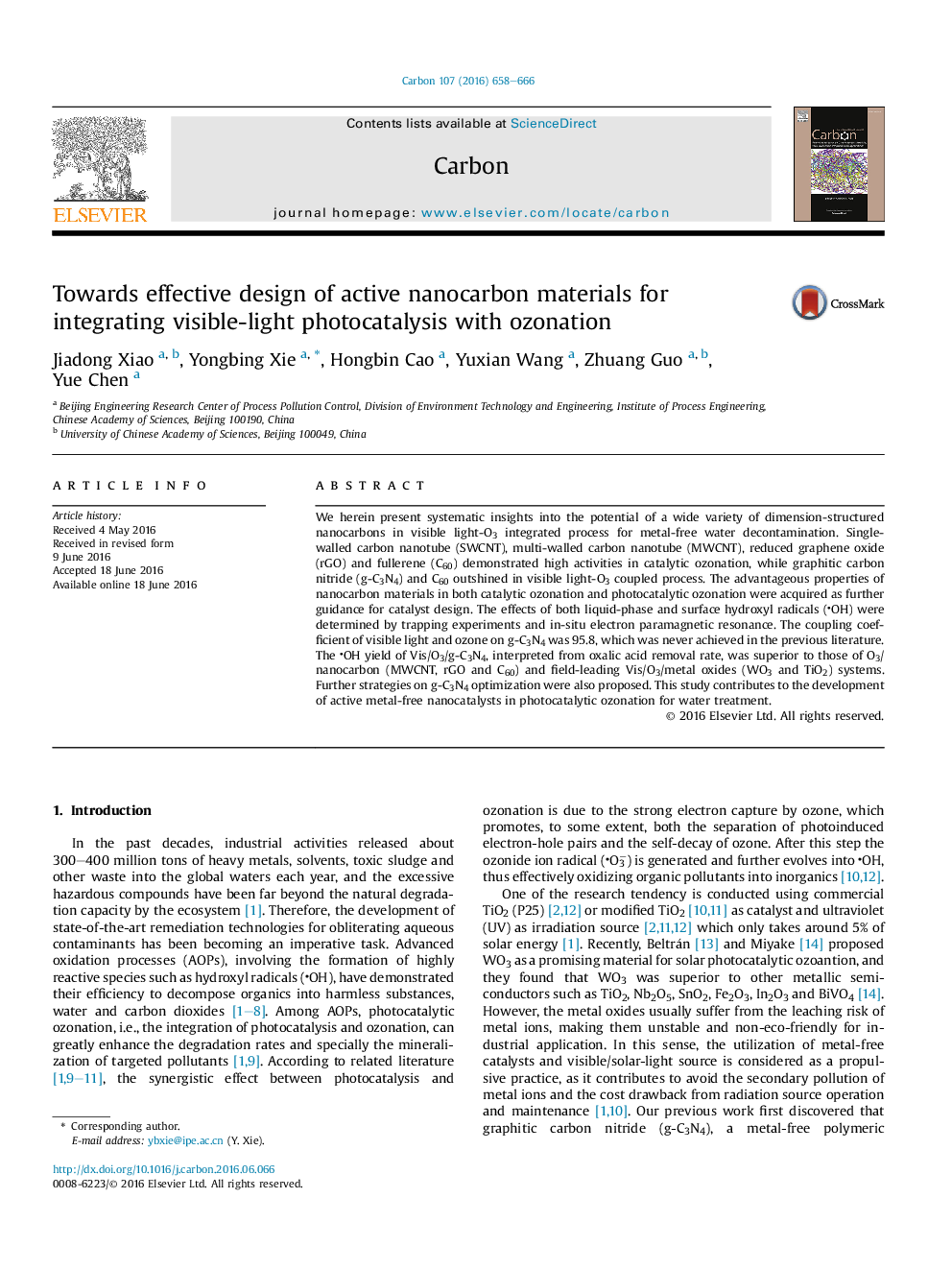| Article ID | Journal | Published Year | Pages | File Type |
|---|---|---|---|---|
| 1413146 | Carbon | 2016 | 9 Pages |
We herein present systematic insights into the potential of a wide variety of dimension-structured nanocarbons in visible light-O3 integrated process for metal-free water decontamination. Single-walled carbon nanotube (SWCNT), multi-walled carbon nanotube (MWCNT), reduced graphene oxide (rGO) and fullerene (C60) demonstrated high activities in catalytic ozonation, while graphitic carbon nitride (g-C3N4) and C60 outshined in visible light-O3 coupled process. The advantageous properties of nanocarbon materials in both catalytic ozonation and photocatalytic ozonation were acquired as further guidance for catalyst design. The effects of both liquid-phase and surface hydroxyl radicals (OH) were determined by trapping experiments and in-situ electron paramagnetic resonance. The coupling coefficient of visible light and ozone on g-C3N4 was 95.8, which was never achieved in the previous literature. The OH yield of Vis/O3/g-C3N4, interpreted from oxalic acid removal rate, was superior to those of O3/nanocarbon (MWCNT, rGO and C60) and field-leading Vis/O3/metal oxides (WO3 and TiO2) systems. Further strategies on g-C3N4 optimization were also proposed. This study contributes to the development of active metal-free nanocatalysts in photocatalytic ozonation for water treatment.
